Imagine catapulting your email marketing returns to unprecedented heights, all while making the experience fun for your customers. That's the power of gamification in email marketing.
This innovative strategy is not just about injecting playfulness into your campaigns; it’s about driving customer engagement and boosting your return on investment (ROI) significantly.
In this article, we delve into the nitty-gritty of gamification in email marketing and how it can be a game-changer for your business. Whether you're a seasoned marketer or just starting out, you'll find practical tips and insights to help you make your email marketing strategy more engaging and profitable.
So, are you ready to take your email marketing game to the next level? Read on to unravel the secrets of successful gamification in email marketing.
Understanding Gamification
Let's delve into the psychology of gamification. This is the key to understanding why it's such a potent tool. It has the power to engage and motivate your audience like nothing else.
How Gamification Impacts Behavior
Gamification works by integrating game mechanics like points, badges, leaderboards, and challenges into non-gaming contexts to enhance user engagement, motivation, and participation. It involves identifying desired goals and designing a rewarding system that drives competition, collaboration, and achievement.
According to a study by Achievers Workforce, since the pandemic began, 46% of survey participants feel less connected to their company. Needless to say, In a post-pandemic reality, gamification is an absolute must-have.
In education, it can facilitate interactive learning with milestones, such as completion of lessons or passing of quizzes.
In business, gamification can boost employee productivity by 89%. It can also be used in onboarding programs or achieving specific targets.
Discussion on the Psychology Behind Gamification
Gamification is effective because it taps into our inherent psychological needs for mastery, autonomy, and social interaction. As humans love games, incorporating gameplay elements into everyday tasks boosts motivation and engagement.
It also establishes an emotional link, enhancing participation through positive emotions like enjoyment, anticipation, and achievement. Rewards encourage continuation and challenge-seeking.
Gamification inspires competition and promotes collaboration, benefiting from our natural brain wiring. It can even help employees use analytical tools!
Showing the Relevance of Gamification in Email Marketing
Gamification is more than just a short-term trend in the communication strategy. It's a potent tool that can make your emails more memorable and engaging.
A perfect e-mail subject line is a must, but that’s not all. You can add videos to email, interactive quizzes, polls, puzzles, or contests to your email campaigns, thus motivating your subscribers to interact with your content.
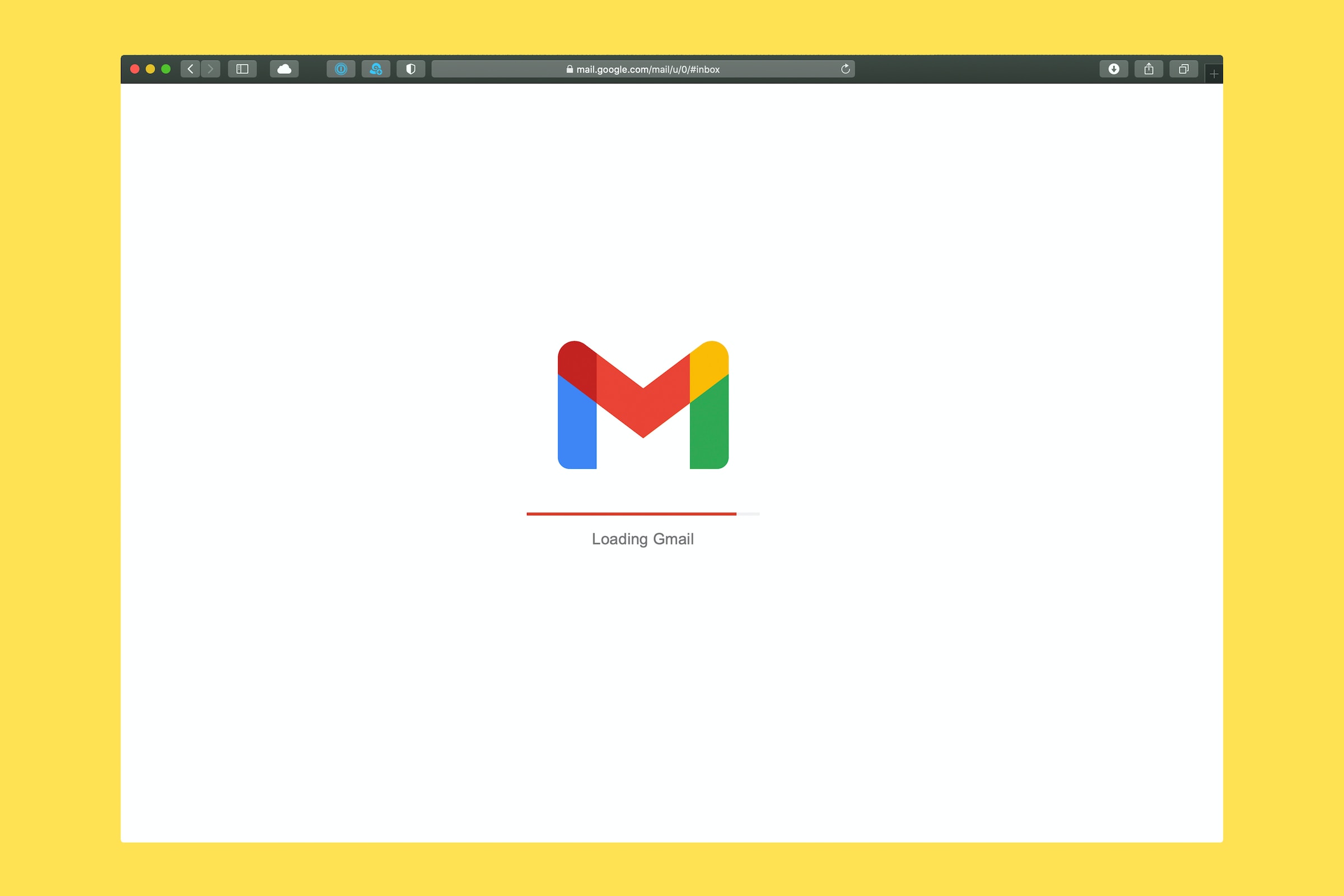
Your customers are likely to appreciate this fresh and dynamic content. And guess what? You'll benefit, too. You can expect increased open rates and conversions.
Gamification isn't just a passing fad. It's a tried and tested strategy to amplify your email marketing efforts.
How Gamification Boosts ROI in Email Marketing
Here's how adding elements of gameplay to your marketing emails increases your return on investment:
1. Enhanced Engagement: Interactive elements like quizzes, puzzles, contests, scoring points, and leaderboards grab the recipients' attention, making them more likely to engage with the email. Higher engagement often translates to improved click-through and conversion rates.
2. Increased Open Rates: Marketing emails, especially those sent through secure e-mail delivery services with gamified elements in the subject line or teaser text, are more appealing to recipients. This boosts the chances of your email being opened, increasing open rates.
3. Acquisition and Retention: By rewarding recipients for engaging with your content – like with discounts or special offers – you can encourage new sign-ups and increase customer loyalty.
4. Greater Data Collection: By incentivizing viewer participation, you can gain valuable data and insights into your audience's behavior, preferences, and habits. Use this information to make data-driven decisions and improve your overall marketing strategy.
5. Positive Brand Experience: Gamified emails are fun and entertaining, meaning they'll be associated with positive experiences. This will set you apart from your competitors, fortifying your brand identity and reputation.
6. Personalized Experience: By tailoring the game aspects to individual customers, you provide a personalized experience that brings value to both you and the customer.
How Different Forms of Gamification Can Be Used in Email Marketing
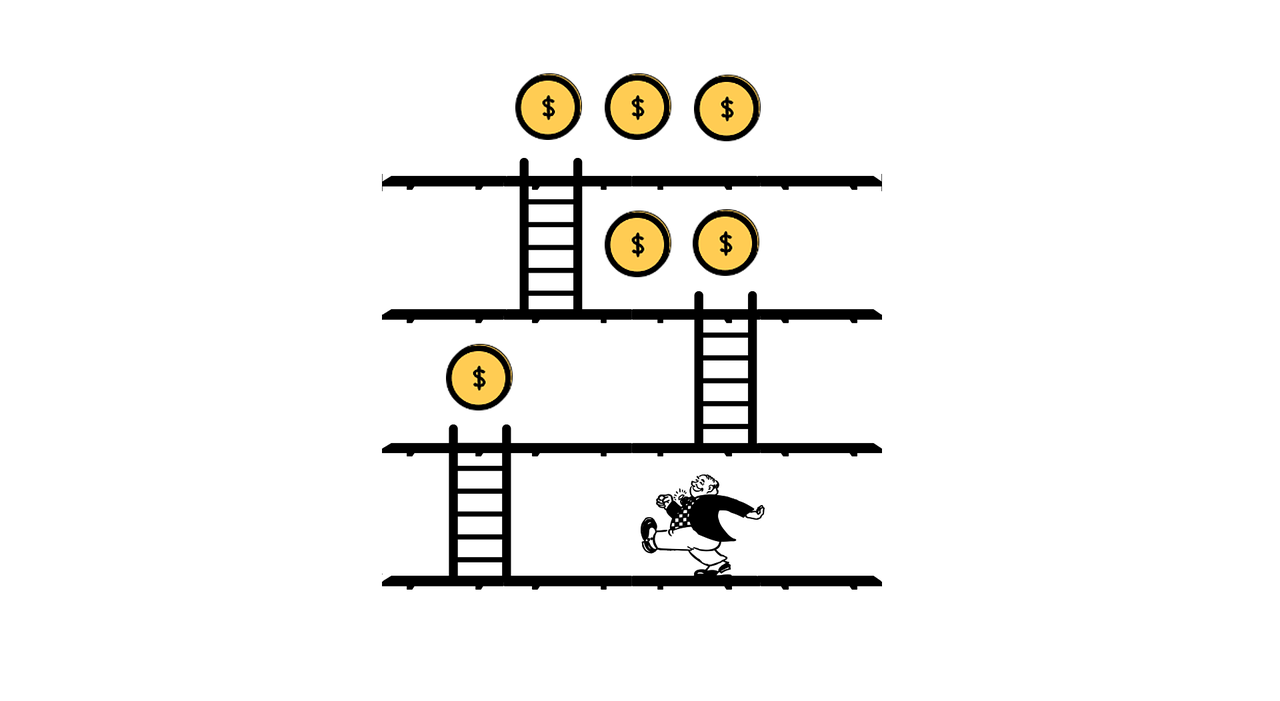
Gamification is a powerful tool that can supercharge your email marketing strategies. It comes in many forms, each with its own unique benefits.
Firstly, consider incorporating quizzes and surveys into your email newsletters. These are not only entertaining for your audience, but they also provide a means for collecting valuable customer data.
- Let's say you run a boutique clothing store and send out a quiz to your email subscribers asking about their favourite fashion trends. This data can then be used to tailor future emails and product selections to better align with your customer's preferences.
Another form of gamification is the use of leaderboards and scoring systems. These elements can spark competition among your subscribers, fostering higher levels of engagement.
- For example, your top spenders could receive a congratulatory email with a leaderboard highlighting their purchasing prowess compared to other customers. This not only encourages more purchases and customer loyalty but also creates a sense of exclusivity.
Lastly, let's not overlook interactive games. These are brilliant ways to capture the attention and convey the message in a fun, productive way.
- Simple interactive games are perfect for onboarding emails, as they help new employees retain and re-call necessary information. For instance, a puzzle or matching game can be used to remind newcomers about the most critical aspects of company culture in a fun and memorable way.
Remember, aligning your gamification strategy with your overall marketing goals is crucial. Choose your tactics with care. If done right, you'll notice a substantial uplift in your email marketing ROI.
The Best Practices for Incorporating Gamification Into Email Marketing Strategy
Incorporating gamification into your email marketing can be a game-changer. But to do it right, there are a few best practices to remember.
First and foremost, the games you introduce should mirror your brand's image. Imagine the confusion if a bank that's always maintained a serious tone suddenly started sending Candy Crush invites. So, align your games with your brand. Make it meaningful and relevant.
Next, let's talk about the value you're delivering. Your game should come with a reward that's valuable to your customers. Maybe it's a discount or a sneak peek at a new product. Or perhaps it's just a fun distraction from their daily routine. No matter what it is, make sure it's something your audience will appreciate.
Now, onto the gameplay itself. Simplicity is key. The last thing you want is to frustrate your audience with a complicated game. So, keep it easy. The goal here is engagement, not a brain teaser.
Finally, testing and optimization are crucial. Don't just create a game and leave it at that. Look at how it's performing. What's working? What's not? Use these insights to tweak and improve your game.
Gamified emails can give your engagement rates a significant boost. With these best practices in mind, you're well on your way to mastering this exciting trend in email marketing.
Real-Life Examples of Successful Gamification in Email Marketing
Several brands have successfully employed the concept of gamification in their email marketing campaigns, resulting in increased email engagement, customer retention, and, ultimately, greater ROI.
Litmus
Litmus provided an opportunity for participants to secure a free pass to their conference. Five emails were made, each containing a concealed message or picture.
The winner of the ticket was selected from those who deciphered the puzzle and posted the solution on Twitter using a designated hashtag.
Participants could attempt to win the ticket five times, so this incentive encouraged them to open subsequent emails and test their fortune.
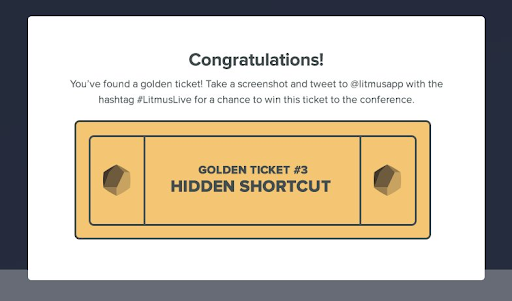
Pizza Hut
Pizza Hut utilized a more straightforward but equally effective gamification strategy. In their emails, they provided a representation of a slot machine, with the promise of discount codes and special offers if the recipient hit the jackpot.
This interactive element not only made their emails more engaging but also encouraged customers to order more frequently, as they were enticed by the potential rewards.
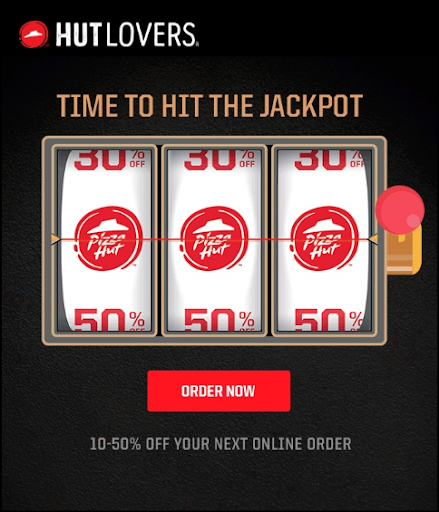
Fabiani
Fabiani, a high-end fashion brand, successfully gamified their email marketing campaign by adding a bunch of riddles to it. Users who managed to solve them had a chance to win an enticing discount.
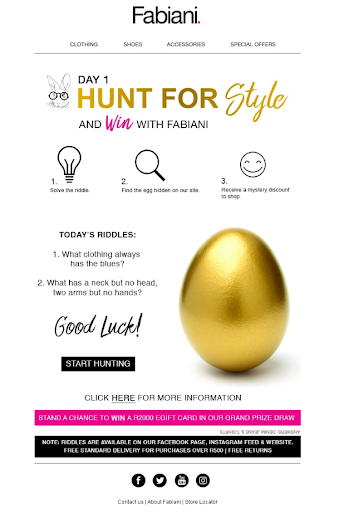
Conclusion
Gamification in email marketing is not just a trend but an effective tool to drive customer engagement and boost ROI.
From quizzes and leaderboards to interactive games, there are various ways to incorporate gamification into your strategy. The key is to ensure it aligns with your brand and brings value to your audience.
Remember, simplicity is crucial, as well as ongoing testing and optimization. Successful brands like Litmus, Pizza Hut, and Fabiani have already reaped the benefits of this engaging approach, showing us that when done right, gamification can take your email marketing game to new heights.
So why wait? It's time to infuse some fun into your emails and watch your engagement rates soar!
About the author:
Robert Surdel is a content team leader at Husky Hamster. When he's not spending time in nature, he loves to learn about the past, AI, and the mysteries of the human brain. Apart from that, he can often be spotted power walking while listening to podcasts and broadening his musical horizons.
What would you like to know, and what would be the best way to share this information with you? What are the best tips & tricks, what workaround do you use? We'd really appreciate your insight on these ones to make our integrations better, more productive, and much more efficient. Comments, tweets are always welcome.